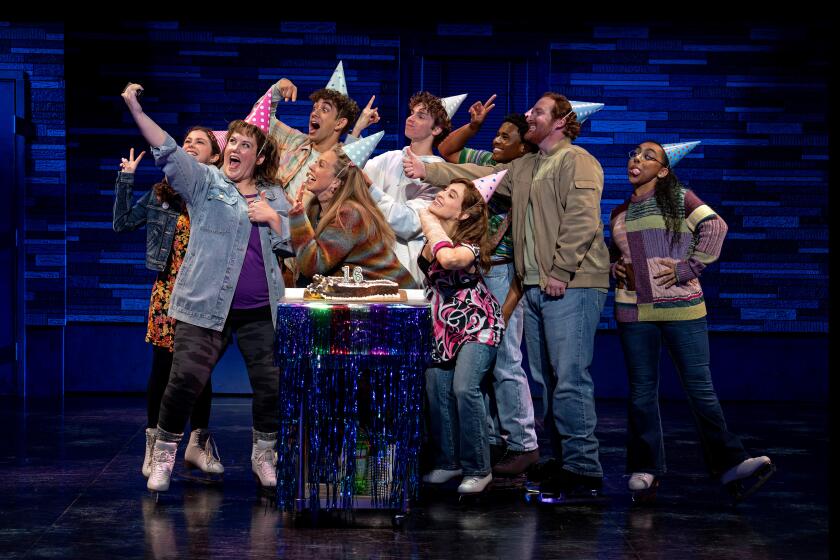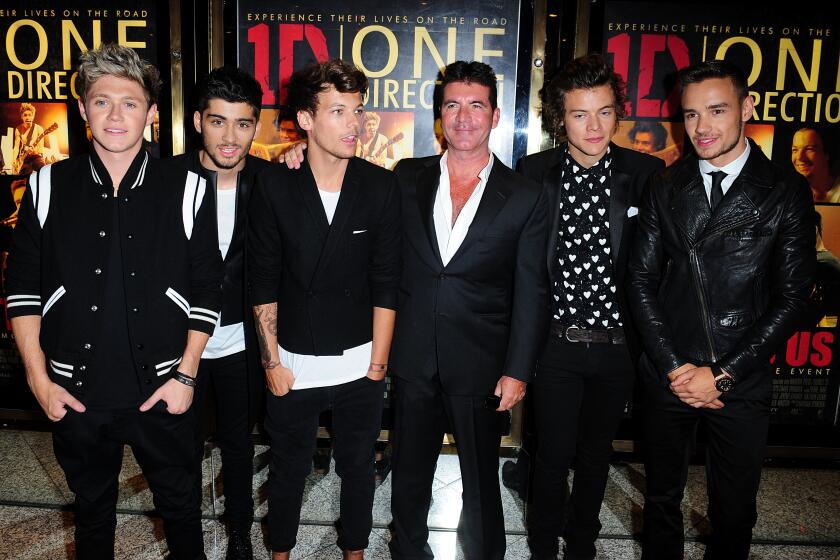‘Fairer Sex’ Has Left Its Mark on Battlefield
Maj. Nadine Heron of the Royal Military Police had just fired a group of Iraqi men for stealing from her newly formed police service in Basra.
As the disgruntled men left the room, one commented: “We forgot. She’s a major, but she’s also a woman and they are emotional beings.”
Heron, 33, laughed as she told the tale at the launching of a new exhibition on the role of women in war, but it shows how women’s role in military conflicts has often been tied up with their image as the “fairer sex.”
The role of women in combat is now more acknowledged, and there have been a handful of famous female warriors -- among them Joan of Arc, Catherine the Great and the ancient Celtic queen Boadicea.
In more recent times, from nursing heroine Florence Nightingale to notorious spy Mata Hari, more rigid lines have usually been used to portray women in war: those who kept the home fires burning, nursed in the field or worked as the glamorous secret agent.
But a new exhibition at London’s Imperial War Museum portrays women in conflicts in their full range of roles -- fighter, worker, entertainer, journalist, traitor, spy, nurse, victim.
It includes body armor worn by Princess Diana in Angola while promoting a ban on land mines, a camera used by American fashion photographer-turned-war-chronicler Lee Miller, the World War II uniform of film star Marlene Dietrich and the gun carried by British spy Violet Szabo.
The collection also tells the stories of hundreds of anonymous women through uniforms, costumes, diaries, letters and other artifacts.
“Women’s involvement in war is unavoidable,” historian Julie Wheelwright said. “But there’s a vast submerged population of women whose stories have not been told. Let’s face it, most military histories are written by men.”
Heron, temporary police chief in Basra after the southern Iraq city fell to coalition forces in the recent war, said after viewing the collection: “There is so much here that even I, in my position, didn’t know.”
The “Women and War” exhibition chronicles the often traditional tasks given to women during conflicts. Even those with defined roles, such as nurses, served a dual purpose, providing a morale boost for the men as well as medical aid.
“I can still remember their faces,” said Iris Bower, 89, recalling how she was the first woman to land on the Normandy beaches on D-day as a senior nurse in the Princess Mary’s Royal Air Force Nursing Service.
“I was in full battle dress with a tin hat and pack on my back,” she said. “When I landed, all the British Tommys saw me and they shouted, ‘Watch out Adolf, you’ve had it now.’ ”
Many women talked about the close relations forged in wartime -- an important element for Bower, who enlisted during World War II after her fighter pilot husband died over France, and for Flight Sgt. Ann Carter, who served in recent years in Iraq, Afghanistan and Kosovo.
“We don’t tend to think about the danger. We go more for the camaraderie and rapport and supporting each other. It really takes your mind off it,” Carter said.
As times have changed, women’s roles have also evolved. Dr. Christa Hook, a volunteer with the aid group Doctors Without Borders, said that in Afghanistan, it was a clear advantage having women in the field because Afghan women -- under the Taliban -- could not have contact with male health workers.
“We didn’t really belong anywhere and, as such, were in a privileged position -- we could work with men and women both in patients and in colleagues,” she said.
The exhibition, which runs to April 18, also pays homage to women who defied society’s rules by engaging in combat.
Among them is Canadian-born Sarah Edmonds, who fought on the Union side in the American Civil War by enlisting under the alias Franklin Thompson. When she developed malaria, she realized that treatment would likely expose her gender and she deserted. But she later received a government pension based on her military service.
Pictures from last year’s seizure of a Moscow theater by Chechen rebels depicts women’s role in terrorism.
Other displays include the tunic dress that former Spice Girl Geri Halliwell wore to entertain troops in Oman in 2001, notebooks from U.S. war correspondent Martha Gellhorn, and the helmet and kitbag used by BBC journalist Kate Adie during the Gulf War.
The exhibition also has a section for women who actively opposed war, displaying the white poppy worn by a female conscientious objector in 1943. It was a time when all British women up to age 51 were required to do some form of war work, and more than 200 women were jailed for refusing on grounds of conscience or religious belief.
The museum says the collection of uniforms, posters, photos and personal effects is the largest ever gathered on the topic, and was culled from museums in Britain, the United States, Russia, Germany, China, Australia and elsewhere.
“I think it’s a shame that we have to have an exhibition just about women,” Heron said. “This stuff should be in all the general exhibitions about war. Maybe in future it will.”
More to Read
The biggest entertainment stories
Get our big stories about Hollywood, film, television, music, arts, culture and more right in your inbox as soon as they publish.
You may occasionally receive promotional content from the Los Angeles Times.










